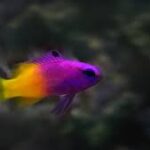The Dragon in Chinese Gifts and Handicrafts: A Symbol of Culture and Craftsmanship

In Chinese culture, the dragon holds profound significance as a symbol of power, prosperity, protection, and good fortune. This majestic and mythical creature has been an integral part of Chinese history, culture, and traditions for thousands of years, and its influence extends to nearly every aspect of Chinese society. One of the most interesting areas where the dragon’s presence is felt is in Chinese gifts and handicrafts, where it is skillfully incorporated into various objects and artworks.
From intricate jewelry and pottery to decorative items and clothing, the dragon is a popular motif in Chinese handicrafts, often representing wishes for prosperity, longevity, and happiness. The use of the dragon in these items is not only an expression of artistic craftsmanship but also serves as a means of conveying important cultural values and beliefs.
This article delves into the significant role of the dragon in Chinese gifts and handicrafts, exploring its symbolism, artistic representations, and the various ways in which it is incorporated into traditional and modern craft items. We will look at how the dragon motif is integrated into Chinese handicrafts, why it holds such cultural importance, and how it continues to inspire the creation of meaningful gifts that reflect the rich heritage of China.
The Symbolism of the Dragon in Chinese Culture
The Chinese dragon is unlike any other mythological creature in the world. It is revered as a symbol of positive energy, strength, and protection, often associated with auspicious traits like good luck, prosperity, and longevity. Unlike the terrifying and destructive dragons in many Western cultures, the Chinese dragon is benevolent, gentle, and harmonious. It is deeply embedded in Chinese folklore, history, and philosophy.
In ancient China, the dragon was not only a symbol of the imperial family but also represented the forces of nature. It was believed that the dragon had control over water, particularly rain, and that its movements influenced the weather, which was critical for agricultural success. The dragon also represented the connection between heaven and earth, symbolizing the balance and harmony between the natural world and humanity.
The dragon is especially linked with the emperor, who was referred to as the “Son of Heaven” and believed to possess the divine right to rule. Imperial artifacts, such as thrones, robes, and banners, were often adorned with dragon imagery to reflect the emperor’s sovereignty and his ability to maintain cosmic order.
Given its positive associations and significance, the dragon has become a favorite motif in Chinese art, crafts, and decorative items. It is considered a powerful symbol that brings good fortune, drives away evil spirits, and protects the wearer or owner of the item.
The Dragon in Chinese Gifts: Tradition Meets Modernity
In Chinese culture, giving gifts is a practice laden with meaning, and the items chosen often carry deep symbolic value. The dragon, with its auspicious symbolism, is frequently incorporated into a wide range of Chinese gift items, especially for special occasions like weddings, birthdays, New Year celebrations, and corporate events.
Jewelry, particularly pendants, necklaces, bracelets, and rings, are common gift items that feature dragon motifs. These dragon-themed accessories often serve as symbols of strength, courage, and protection for the recipient. Dragon pendants and charms, for example, are popular gifts given to loved ones, especially during the Chinese New Year or to celebrate personal milestones like graduations or promotions.
Dragon jewelry is also commonly given as a gift to children. It is believed that the dragon will watch over and protect the child, ensuring their safety and well-being. The dragon’s image in these items is usually crafted in gold, silver, or jade, and the choice of material often adds to the cultural significance of the gift.
In addition to jewelry, decorative items are also popular gifts that feature dragon motifs. For example, dragon figurines and statues made from materials such as porcelain, jade, wood, or bronze are common choices for housewarming gifts or corporate gifts. These figurines are often placed in homes or offices to bring good luck and to symbolize the strength and success of the household or business. In many cases, the dragon figures are positioned near the entrance of the home or workplace, as it is believed that they will guard the space and invite prosperity.
Dragon Motifs in Chinese Handicrafts
Chinese handicrafts are renowned worldwide for their craftsmanship and intricate designs, and the dragon plays an important role in many traditional Chinese arts and crafts. The dragon is frequently incorporated into embroidery, textiles, ceramics, and lacquerware, adding depth and cultural meaning to these handcrafted items.
One of the most famous forms of Chinese handicrafts that feature the dragon is Chinese embroidery. Historically, embroidery has been a major art form in China, and dragons have been a popular motif in this medium for centuries. The Imperial Dragon Robe, worn by emperors during the Qing Dynasty, is a famous example of this embroidery tradition. The robe was intricately embroidered with dragons, using gold and silk thread, to represent the emperor’s imperial status and divine power.
In textile arts, the dragon appears in a variety of forms, from embroidered wall hangings to traditional silk brocades. These textiles are often used as home décor, such as cushions, curtains, or tablecloths, bringing both beauty and cultural meaning into the home. Silk scarves, shawls, and clothing items also commonly feature dragon motifs, and these items are highly valued for their intricate designs and symbolic meaning.
Ceramics, such as vases, bowls, and teapots, are another area where the dragon’s image can be found. Jingdezhen, known as the “Porcelain Capital” of China, has been producing high-quality ceramic wares for centuries, and the dragon has been one of the most frequently used designs on porcelain products. Ceramic dragon motifs are often hand-painted in intricate patterns, and they are highly sought after by collectors and connoisseurs of Chinese art.
Another important area where the dragon is featured is lacquerware, a traditional Chinese craft that involves applying layers of lacquer to wood, metal, or bamboo to create durable and decorative surfaces. Dragon motifs are often etched or painted onto the lacquered items, including trays, boxes, and furniture pieces. These items are not only functional but also serve as important cultural symbols, representing power, wealth, and good fortune.
The Dragon in Chinese Calligraphy and Paper-Cutting
In addition to three-dimensional handicrafts, the dragon also appears in other traditional Chinese arts, including calligraphy and paper-cutting. Chinese calligraphy, with its elegant brushstrokes and expressive writing, often features dragons as part of its artwork. The dragon may appear as part of a larger composition, along with other auspicious symbols such as phoenixes or flowers, or it may be the central focus of the work itself. These calligraphic pieces are frequently hung in homes or offices, with the dragon serving as a powerful reminder of strength and good fortune.
Paper-cutting is another traditional Chinese craft that often features dragons. This art form involves cutting intricate designs out of paper, and the dragon is a common motif. The paper-cut dragons are usually displayed in windows during the Chinese New Year or other festive occasions, as it is believed that they bring good luck and protect the home from evil spirits. These dragon paper cuttings may also be used as decorations for special events such as weddings or family celebrations.
The Role of the Dragon in Modern Chinese Handicrafts
In recent years, there has been a resurgence of interest in traditional Chinese handicrafts, and many artisans and designers are incorporating dragon motifs into contemporary products. Modern interpretations of the dragon in Chinese handicrafts blend traditional elements with innovative designs, creating a fusion of old and new.
For example, dragon-themed products such as modern jewelry, home décor items, and art prints have become increasingly popular, particularly among younger generations and international buyers. Many contemporary Chinese artists and craftsmen are experimenting with new materials and techniques while still retaining the symbolic significance of the dragon.
One of the most notable trends in the modern market is the use of the dragon motif in luxury goods. High-end fashion accessories, such as handbags, shoes, and scarves, often feature dragon designs, either through embroidery or print. The dragon is incorporated into these products not only as a symbol of tradition but also as a statement of luxury, power, and exclusivity.
The Dragon in Gifts for Special Occasions
The dragon continues to play an essential role in gifts for special occasions in China. During the Chinese New Year, gifts that feature the dragon motif are given to friends and family as a gesture of goodwill and prosperity for the coming year. Similarly, during weddings, the dragon is often incorporated into gifts for the couple, representing blessings of happiness, wealth, and a harmonious marriage.
In business settings, the dragon is frequently included in corporate gifts, such as engraved crystal figurines, jade sculptures, or customized artwork, as a way to wish success and prosperity for the company. These gifts are often exchanged between business partners, clients, and employees, reinforcing the connection between cultural traditions and professional relationships.
Conclusion
The dragon, with its rich symbolism and cultural significance, continues to be a powerful motif in Chinese gifts and handicrafts. Whether incorporated into jewelry, ceramics, embroidery, or calligraphy, the dragon serves as a representation of strength, good fortune, and prosperity. Its enduring presence in these products reflects the deep connection between Chinese craftsmanship, culture, and the symbolic power of the dragon. As China continues to modernize and expand its global influence, the dragon remains a cherished symbol of heritage and a reminder of the strength and resilience of Chinese traditions. Through the continued use of dragon motifs in gifts and handicrafts, the legacy of this mythical creature is preserved and celebrated for generations to come.

